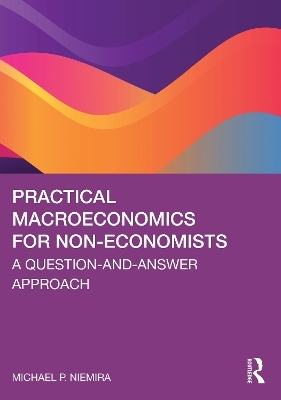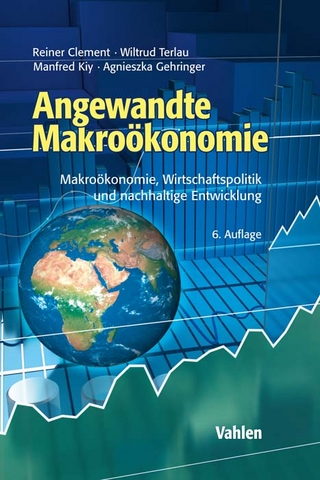
Practical Macroeconomics for Non-Economists
Routledge (Verlag)
978-1-032-48840-0 (ISBN)
Practical Macroeconomics for Non-Economists provides the tools, the theory, and the empirical understanding of macroeconomics without the heavy lifting of the mathematical and econometric models.
This accessible book introduces the building blocks of macroeconomic thinking and challenges the reader to apply these insights to learn why economists say what they do and what guides economic policymakers. Linking actual data to theoretical concepts, it explores competing economic theories, and uncovers some of the key controversies in macroeconomic theory and how different perspectives lead to alternative and vastly different policy recommendations.
Key features include:
• Coverage of all the key macroeconomic topics, such as GDP, inflation, unemployment, output and productivity, business cycles, aggregate demand/supply, and fiscal and monetary policy.
• Question-and-answer format, covering the foundations of each topic in a logical progression, to provide the reader with a quick reference and more focused discussion.
• "Advanced questions" to encourage deeper discussion.
• Start-of-chapter learning objectives, which allow the reader to "see" the road ahead for each section.
• End-of-chapter "Issues to think about" boxed features, which offer the reader an opportunity to apply critical thinking to the issues covered.
• Resource manual and PowerPoints for instructors.
Practical Macroeconomics for Non-Economists is the ideal textbook for anyone looking for a practical and non-technical introduction to the subject.
Michael P. Niemira is the chief economist of The Retail Economist, LLC. He is the former chief economist and director of research for the International Council of Shopping Centers and has held economist positions for the Bank of Tokyo-Mitsubishi (now MUFG), PaineWebber (now UBS), Chemical Bank (now JPMorgan Chase), and Merrill Lynch. Niemira also has been an adjunct assistant professor of economics at New York University’s Stern School of Business and Graduate School of Arts and Sciences, as well as taught at the New York Institute of Finance. Currently, he is an adjunct instructor for the Maricopa Community Colleges, Arizona, USA.
PART 1: Macroeconomic Thinking and Tools 1. Macroeconomic Basics 2. The Importance of Circular Flow in the Economy 3. Key Macroeconomic Statistics—Jobs and Unemployment 4. Key Macroeconomic Statistics—Inflation 5. Key Macroeconomic Statistics—Output and Productivity 6. Understanding Business Cycles and Trends 7. A Macroeconomic Toolbox for Descriptive Analysis 8. The Aggregate Demand (AD) and Aggregate Supply (AS) Model 9. Money and Banking 10. Monetary Policy—Goals, Theories, Rules, Discretion, and Implementation 11. Government Spending, Taxation, and Fiscal Policy 12. Policy Implications of Macroeconomic Theories PART 2: Macroeconomic Issues 13. The Disappearing Worker 14. Implications of an Evolving Economy 15. The Great Moderation Followed by the Great Volatility 16. The Global Debt Explosion and Worries 17. Setting Tax Rates 18. Measuring Macroeconomic Uncertainty PART 3: Macroeconomics Reshaped 19. The Future of Macroeconomics Epilogue: Developing and Interpreting Macroeconomic Policy Choices
| Erscheinungsdatum | 17.07.2023 |
|---|---|
| Zusatzinfo | 74 Tables, black and white; 122 Line drawings, black and white; 122 Illustrations, black and white |
| Verlagsort | London |
| Sprache | englisch |
| Maße | 174 x 246 mm |
| Gewicht | 860 g |
| Themenwelt | Wirtschaft ► Allgemeines / Lexika |
| Wirtschaft ► Volkswirtschaftslehre ► Makroökonomie | |
| ISBN-10 | 1-032-48840-9 / 1032488409 |
| ISBN-13 | 978-1-032-48840-0 / 9781032488400 |
| Zustand | Neuware |
| Informationen gemäß Produktsicherheitsverordnung (GPSR) | |
| Haben Sie eine Frage zum Produkt? |
aus dem Bereich


